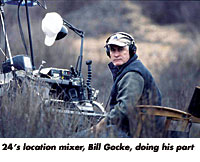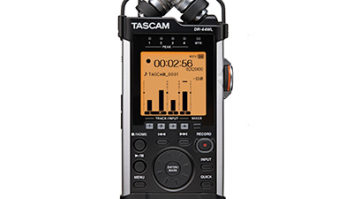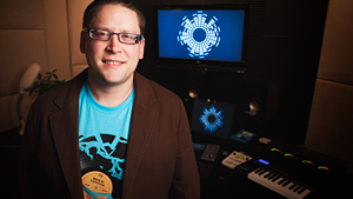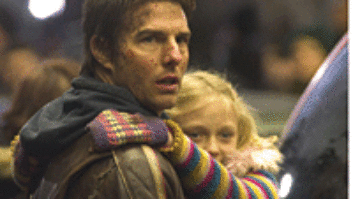
When we talk about film and TV sound, we tend to gravitate toward
the “sexier” disciplines of sound design and effects
generation — recording those 18th-century muskets or supercharged
hot rods, or combining whale noises with lions, wind and creaking wood
to make the perfect dinosaur roar. But the production sound folks are
among the hardest-working professionals in our business: They’re on the
set before shooting begins and after shooting ends each day, struggling
to ply their craft in settings that are always more oriented
toward the demands of the visual artisans than the audio
specialists.
In television in particular, production of conventional dramatic
series and situation comedies is down at the major networks, but with
the rapid proliferation of cable channels, there are more shows of
every genre being produced and broadcast than ever before, and
hundreds more in development or at the pilot stage. And what’s taken
the place of those dramas and sitcoms at the big networks? Reality
shows, which often require multiple teams of location recordists
(though for shorter periods than a scripted full-season show).
ALL IN A DAY’S WORK
Recently, we spoke to a pair of TV location sound pros — one
on a network series, the other a veteran of numerous reality shows
— to find out more about the demands and peculiarities of the job
and (this being Mix and all) talk a bit about gear.
Let’s see: There’s a deadly virus in the hands of mysterious
evil-doers. A top senator is threatening President Palmer. We’ve had a
calamitous prison riot and jailbreak, graphic torture, a suicide, a man
shooting his own brother in the back but then being blown up himself,
and agent Jack Bauer making out with the terrorist woman who killed his
wife. And that’s not the half of it! A lot happens in a
“day” on the Fox show 24, now nearing the end of its
third action-packed season.
It’s a clever concept: Each hour of the series depicts a single hour
in one crisis-filled day in the life of the government’s top-secret,
L.A.-based Counter Terrorist Unit (CTU). There are usually half-a-dozen
interweaving plots and subplots going at once, most of them, it seems,
involving lots of running and driving around, gun battles and
—always— talking on cell phones.
Bill Gocke has been the location mixer for the series since the
pilot was shot in Canada nearly four years ago. Gocke has been involved
in sound for more than 25 years. After apprenticing as a utility sound
technician, he got into production work as a boom operator in the ’70s
working on the hit sci-fi series Star Trek: The Next Generation,
among others. He worked as a mixer for the first time on Star Trek:
Deep Space Nine and a number of feature films (including A
Soldier’s Story and Best Friends), but has mainly done
television and now does 24 exclusively.
When I spoke with Gocke, it was the morning after a long
afternoon/evening shoot for the series. Because of the unusual
“real-time” temporal framework of the series, production
personnel go through long stretches when all of the exterior action
(and there’s plenty of it) is shot at night — say, if the episode
takes place between one and two in the morning.
“There’s definitely more night work than any other show I’ve
been involved with,” Gocke says. “But they try to do
splits, so we’ll do some of the indoor work, like at CTU
[headquarters], in the daytime and then go out at night. But it depends
on the situation. A night might have a 4:30 p.m. call and then go all
night in downtown L.A. Yesterday was an 11:30 [a.m.] call and we got
off around midnight, 12:30. But it was inside a lot of the time. It’s
kind of rough, but you adjust.
À LA CART
“This year’s show started differently than we have before
— it started later in the ‘day.’ But at the other
end, when we get ready to finish this year, it will be daylight on the
show so we’ll be shooting in the daytime more.”
Like most location recordists/mixers, Gocke keeps his sonic world on
a portable cart that goes with him wherever the show is shooting.
“I use a Cooper 208 [8-input] mixer and I also have a [Cooper]
106 backup,” he says. “They want DAT, so I use a Fostex
PD-4 and I back it up with a Nagra IV, which is a great machine —
it’s the backbone. It’s so dependable, so solid. We use Lectrosonics
radio mics — I use the Lectrosonics 210s — as well as
Sennheiser MKH 416s, MKH 50s and 60s, and also some Schoeps and Sanken
lavs.” Gocke says he appreciates that radio mics have come a long
way, because they’re using them on the show more than ever. Radio mics
are particularly important on 24 because they are shooting with
two cameras all of the time, one handheld and one on a dolly, usually
for tighter shots. “This can create problems for us, because,
obviously, you have two different perspectives to deal with, both in
terms of the audio and, more practically, where I’ll be during the
scene,” says Gocke. “If it’s just one camera shooting, I
can usually be right off to the side in the shadows, but with two, you
have to pick your spot more carefully. Plus, there’s a lot of movement
— the actors are constantly moving and roaming around — so
it makes it difficult for us to get booms overhead some of the time.
That’s why the radio mics are a great tool. They have great range and
the mics have gotten better and better.” Typically, Gocke will
have radio mics on all of the key players in a scene and, if possible,
have some plant mics as well. “If there are five people, I try to
separate [the mics] and keep them clean as much as possible, or at
least aware of what overlaps there might be.”
Gocke says he still prefers the sound captured by a boom as opposed
to RF mics: “It has a more natural sound to me. It brings in some
air, some ambience, which sounds prettier to me. There’s more warmth.
The radio mics are more trouble — putting them on people with
different clothes, worrying about [clothes] rustle, all that stuff. But
at this point, they’re indispensable,” he asserts. “We’re
not going to get in the cab of a truck with a boom mic. You need the
radio mic. They have good range, so we have a presence [in the scene]
even if we can’t physically be in the truck. And if they can use some
of that sound, they will; if not, they re-do it later on.”
When he can, Gocke likes to blend the radio mics with the boom. He’s
used the same boom operator, Todd Overton, since their Deep Space
Nine days, and he also works with a “third”: Cory Wood,
who’s also a boom operator and assists in all manner of location sound
needs. “It’s a team effort,” Gocke stresses. “They’re
extremely important. They both have to be paying total attention to
what’s going on, what the camera’s doing.”
In fact, Gocke says this camera consciousness is one of the most
important aspects of his work: “A lot of this job is learning how
to get a mic where it needs to be with all the other things that are
involved, from cameras to lighting…how to get to your spot. You
have learning about lenses and what you can get away with soundwise
with each lens. You need to know what the dolly is doing, what the
handheld is doing. Are they zooming in? Are they staying tight or are
they going wide? You have to always determine the perspective of each
shot because the sound has to make sense for that
perspective.”
LOCATION, LOCATION, LOCATION

Alas, the sound department rarely gets much input into scouting
locations, so Gocke and his team often have to make the best of some
rather difficult settings. “They don’t help us out that
much,” he says with a laugh. “The location people mostly
care about the picture. They might say, ‘Sorry about the
freeway,’ but then you just do the best you can with what they
give you. They know it’s a trade-off. They know a location won’t always
work for sound and that sometimes they’ll have to replace stuff
later.”
Fortunately, a decent percentage of the show’s action takes place on
various warehouse soundstages — the CTU set is out in Woodland
Hills, Calif., for example — or locations far removed from big
city noises: Some canyons in Santa Clarita doubled for rural Mexico in
the main story line.
Gocke says that 24 shoots two episodes at once during a
15-day cycle. “We’ll jump back and forth between the two scripts
because the story is always related,” he says. “We’ll shoot
what’s convenient in a given place and time. Doing two [shows] at once
gives us some flexibility that way.
“It used to be that there was a big difference between the way
feature films and TV were shot, but that’s changed. TV used to be
really fast —boom, boom, boom— but now a lot of
features have gotten that way, too. And now some shows are shot more
like features. It’s still fast-paced, but not to the degree they once
were.”
Gocke’s gig on 24 takes up nine months of his year, from July
through April. “Then I try to relax when the show’s not
going,” he says. “You usually don’t have much of a life
when you’re working. It’s a lot of 12-hour days and then on weekends,
you’re just recovering.
A DOSE OF REALITY
“But it’s a great show to work on,” he continues.
“The crew is fantastic, the actors are all excellent. There’s
just a little too much whispering,” he confides with a laugh.
When Dave McJunkin returned my call for this story, he was sitting
in the back of a van in L.A. during a shoot for the pilot of a
prospective Bravo network reality series called Underexposed,
which follows the fortunes of a number of young directors attempting to
make a short (3.5-minute) film on a shoestring budget — sort of a
low-rent Project Greenlight without the hostile producer. The
directors are provided with equipment and $2,000 to shoot about a
three-page script in two 12-hour days. McJunkin and a cameraman were
following one of the young directors as he went through his paces.
In a perfect world, McJunkin might have instead been in some exotic
port-of-call following travelers on The Amazing Race 5, CBS’
Emmy-winning reality series that documents a million-dollar race around
the world by 12 pairs of contestants. McJunkin worked on the previous
two editions of the show, but turned down season five to spend time in
L.A. with his wife and new baby. (He also passed on a call for
Survivor: All-Stars for the same reason; what a spouse!)
McJunkin has a long and varied background in film, having worked on
features, television, commercials, corporate and documentaries since
completing film school at L.A. Valley College in the early ’80s. His
documentary background was particularly valuable when he first got into
the reality TV game, with MTV’s Real World 2 (in Venice Beach,
south of L.A.). McJunkin has worked on several reality shows since his
Real World days, including the short-lived Real Roseanne
Show, with Roseanne Barr; Animal Planet’s ongoing Cell Dogs,
where pooches are trained by prisoners to be guide dogs and pets; and
The Residents on the Discovery Health channel. When we spoke, he
was about to head into L.A. for a stint working on Fear
Factor.
THE RACE IS ON
Reality shows in general are incredibly demanding for location sound
mixers (and camera crew). Because they are completely unscripted, they
have to constantly be at the ready to capture anything interesting
that’s going down. The camera crew has to be as unobtrusive as
possible; ideally, they are completely invisible to the viewers.
There’s a lot of lying around on floors, or worse, being squashed into
a car, perhaps holding a small boom mic if space allows, or at the very
least listening to RF mics on headphones and mixing on the fly. One of
the cardinal rules of reality television is that the crew does not get
involved with the “characters,” so the sound tech and
camera person are really an isolated team of their own once they’re out
on location. “We become producers, in a way, since we’re the only
people out there most of the time,” McJunkin says. There are
often situations where multiple two-person sound/camera crews converge
on some communal spot or event in a reality show, and that produces its
own problems: Who, if anyone, lays out? Who’s covering this or that
aspect of this encounter? Given the sheer number of people required to
handle the sound and visual aspects of most reality series, it’s
amazing that the people being shot seem as unself-conscious as they
do.
For a fast-moving show like The Amazing Race, which might be
in Vienna one day and in North Africa the next, the production teams
have to travel as light as possible — McJunkin can’t have an
8-channel mixer with Nagra backup. “Because we carry all our gear
and our personal belongings with us, we have to keep the weight down. I
was a runner and a tri-athelete for many years so I stay in pretty good
shape. And you need to be in good shape for something like The
Amazing Race because you’re sometimes literally running around
following these fiercely competitive people who are in really good
shape and usually 10 years younger than me and carrying less weight.
It’s hard to keep up with them sometimes. Between the camera and sound
gear — because the sound guy carries some of the camera batteries
— it’s about a 50-pound pack.”
One of the roughest experiences McJunkin remembers on the last
Amazing Race was “running around in Mexico City, which is
a mile high, carrying all this weight, and we were running through this
one square where everyone was cooking different foods on these little
barbecues, and they were using anything to cook the food, including
plastic and paper, and the fumes were unbelievable. It was hard not to
be overcome by the fumes. Another time we spent a January night outside
at a train station in Cortina, Italy, in the Alps, and it was below
freezing. Then there was this other 24-hour bus trip in Mexico where I
got food poisoning. Fortunately, there was a bathroom on the bus. The
producers had a replacement for me ready at the next
destination.”
Though McJunkin prefers to use his own top-quality portable
equipment, he says some network reality shows prefer to get their audio
and video equipment from the same rental house so they can save money
on a package deal. Having multiple crews with the same equipment makes
sense, though: Uniformity of formats is certainly preferable in the
posting stage.
For The Amazing Race 4, “They rigged us with a Wendt
X2, which is a little 2-channel mixer, and a couple of Lectrosonics 210
wireless,” he says. “We have one wireless from a contestant
member and one boom going to those two channels, and we also have a
wireless send to the camera. The other contestant is on a wireless that
goes straight to the camera. The booms you use are these collapsible
carbon-fiber booms that can stretch anywhere from six to 11 feet, but
might collapse down to only 20 inches. On The Amazing Race, they
use Sennheiser MK60 shotguns. I’m not a big fan of the sound, but one
of the nice things about all the Sennheiser RF condenser mics is they
resist humidity and abuse really well. My own preference is a little
Neumann KM100 preamp with the 50 hypercardioid capsule. I like to use
that on interiors, and then I have either a Neumann KMR 82 or an
Audio-Technica 4073, which is loosely based on a Neumann KMR 81 but is
a little more directional. It’s light and it has extremely high output,
so it’s good for exteriors. It also resists the humidity
well.”
For mobility and weight-distribution reasons, “I mount the
mixer on my chest in a harness — a modified climber’s harness
that I got from REI,” McJunkin says. “I try to make it so
it evenly distributes the weight on my shoulders. I started having a
problem with my back carrying a Nagra on my right shoulder for years
and years. So far, the harness has worked really well.”
Given the opportunity to use his own equipment on location, McJunkin
has a different choice of mixer: “I use the Sound Devices 442
mixer, which I really just love. The only problem I had with the
original PSC M4 mixer — now called the Wendt X4 — which did
sound great, is the controls were not laid out in an easy, logical way.
The Sound Devices mixer is better designed — all the controls you
need are on the front and the things you need less are on the side.
Plus, the limiters in it are very good, which is a vital thing in a
reality show because you don’t know when someone’s going to start
screaming,” he says with a laugh. “The wireless I use are
Lectrosonics 205s. A lot of reality shows like to use the Sennheiser
wireless for the reason that the transmitter is so small and doesn’t
show through clothing a lot.” (Survivor gets around that
problem by going all-boom. Where would you put an RF mic on a
buck-naked Richard Hatch?)
McJunkin also says that he’s looking forward to trying out a new
piece of gear: “Lectrosonics has this new transmitter, the M400,
which is waterproof and runs off a single double-A and has an O-ring
seal on the battery. One of the nice things about it is it will emulate
the Sennheiser noise reduction; the compander in the Sennheiser. So if
you have a show that has a lot of Sennheiser receivers, you can use one
of these transmitters, in spite of it being from a different
manufacturer. That’s an interesting thing to do, because a lot of
manufacturers want to set you up to only be able to buy their
stuff.”
Doing sound for reality shows requires special focus and
self-discipline — it’s clearly not for everybody. But the rewards
can be great. Besides being a popular niche at the moment and thus a
good source of work, the reality genre gives even the technical crew an
ongoing glimpse of humanity, for better and worse. It can be
instructive, cautionary, funny, sad, gross and pathetic. Just like real
life. “I like to think that we’re telling the story,”
McJunkin says of reality sound recordists. “After all, there are
no writers. We’re writing the story with our sound. Without that, all
you have is pretty pictures.”
Blair Jackson is Mix‘s senior editor.



